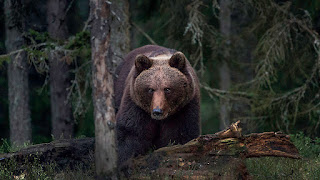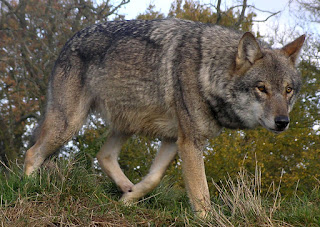What is natural anyway?
 |
| European Brown Bear |
A big topic of discussion in conservation circles at the moment is rewilding, which could be described as the restoration of human modified habitats so that they operate as they should with minimal human intervention. However, this supposes that we can know what this looks like, and since the close of the last Ice Age around 10,000 years ago a very large number of keystone species have become extinct. In this series, I would like to examine the animals and habitats that would have existed in the UK in the period around 120,000 years ago during the Eemian Interglacial. As this is the best available recent geological period to use as a model for what our near future climate might look like studying this time might give us at least a few clues as to what to expect.
 |
| European Wildcat |
At that time the first true modern-type humans had already been around for a long time in Africa and had begun to spread into western Asia and beyond. No one had yet entered the Americas, but people with the use of fire and complex stone technology – possibly even watercraft in some regions– had been living in Europe and Asia as well as Africa for close to a million years. However, the Neanderthals of northern Europe apparently never crossed the sea to Britain, leaving it deserted by humans while full of wildlife, making the British Isles a very useful baseline for what an environment without humans of any sort looks like.
 |
| European Lynx |
At this time the climate in the UK was very similar to today, although perhaps with a more continental- type variation between summer and winter temperatures. Global temperatures were around 1 or 2 degrees higher, and global sea levels were also higher by perhaps as much as 6m. As a result, the North Sea was flooded and as the old land bridge at the Straits of Dover had broken in a previous glaciation the British Isles would have looked in outline much like today, with the exception of some low-lying areas being under water.
 |
| European Grey Wolf |
As a result of all this the
vegetation would also have been the same as today – Oak, Birch, Hazel, Elm, Hawthorn
and so on. In the woods would have been the same Red Fox, Badgers, Red deer,
Blackbirds, Blue Tits and Sparrowhawks that you might see in any British
woodland today. In addition, there would have been predators that were only
eliminated from the UK in historic times such as Wolves, Brown Bears and Lynx.
The Aurochs, wild ancestor of domestic cattle, would have been common, as would
Red and Roe deer. However, there would also have been some surprising
additions, which I will outline in the next part.
No comments:
Post a Comment